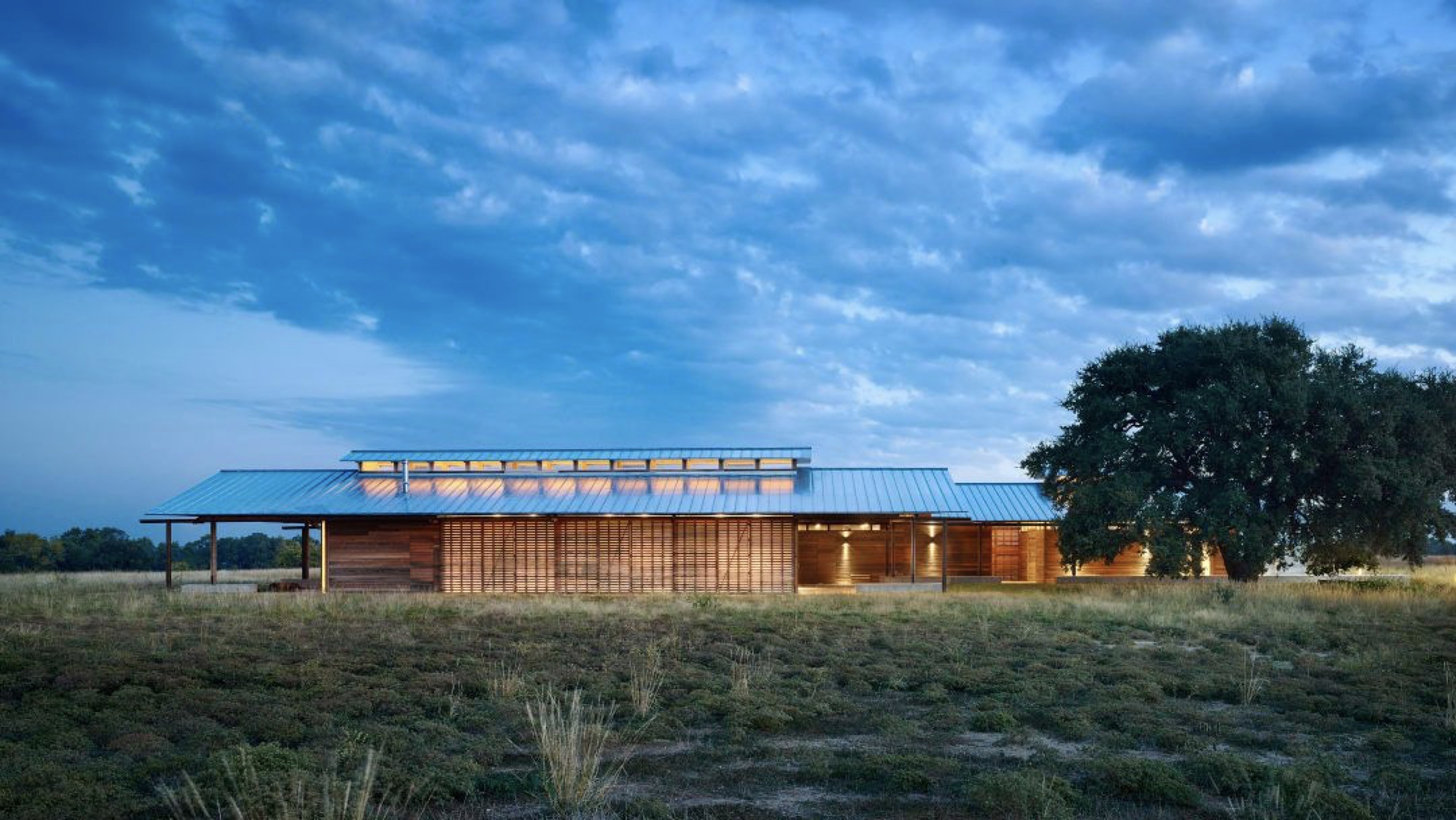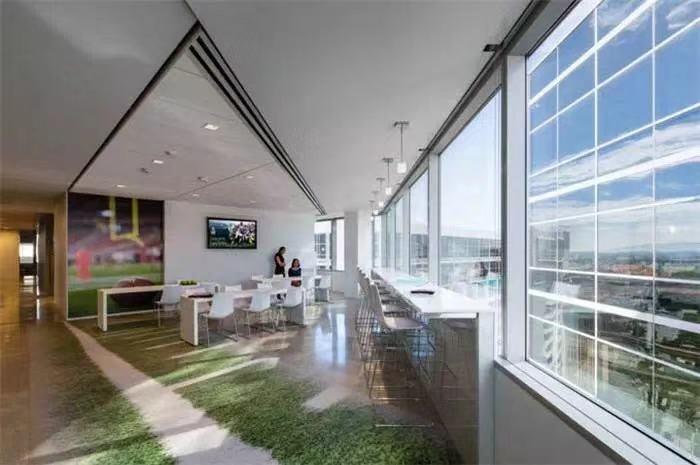这个行业正在超越LEED,为了创新迎接新的机遇
随着社区感受到气候变化对经济、环境和社会的影响越来越大,建筑师在传统“绿色”设计之外遥遥领先。
过去,倡导评级系统(特别是LEED)能够帮助建筑师和潜在客户了解能效、再生材料和低挥发性有机化合物(VOC)方面的可持续设计。越来越多的精明的建筑师和客户正在展望通用的“绿色设计”,并在抗灾弹性能力、材料和健康方面寻找新的机会,在某些情况下提出更严格的要求。
根据2018年的AIA(美国建筑师协会)报告,50%的AIA成员使用能源模型,87%的成员已经开始在其工作中应用抗灾弹性能力。AIA的2030承诺和灾难援助计划是两个重要的资源,因为在快速变化的气候下建筑师将设计放在首要地位。

AIA的Illya Azaroff积极参与培训建筑师提升评估自然灾害或极端天气事件之后建筑的安全所需的技能。Azaroff是纽约公司LAB Architect的创始人兼设计总监,他擅长与客户合作制定建筑策略,以帮助他们抵御极端且有时无法预测的天气状况。2012年10月飓风Sandy袭击东海岸后,对更具抗灾弹性力的建筑物的需求急剧增加。
“目前该行业缺乏专业知识,无法以非常全面的方式解决抗灾弹性力问题,” Azaroff说,“我目前的想法是,这是建筑师可以证明为什么健康、安全和福利是我们正在做的事情的机会,也是我们的道德责任。”他指出,从2007年起,80%的美国人已经开始受到自然灾害的影响。
与联邦安全之家联盟合作,Azaroff的公司最近为一位女性设计了一所房子,这位女士之前住在Breezy Point, Queens,这里在飓风Sandy中被摧毁。在其最新版本中,几乎完整的房子已经建成符合了FORTIFIED Home项目的规格。超强度的门窗以及包括屋顶、墙壁、地板和地基在内的互联系统都会被设计到,以保护房屋在未来免受灾难性天气的影响。
Azaroff解释说,这座房子随后将作为模型与城市和州政府机构分享。他的公司计划在为任何感兴趣的人提供设计,他希望这将鼓励其他建筑师和潜在客户考虑构建防灾项目所涉及的成本和收益。Azaroff也从事于AIA灾难援助手册的2017年更新,他表示重要的是要在设计和施工过程的每个方面都应用抗灾弹性能力,以便业界能够积极主动地思考抗灾弹性能力,而不是被动地。他表示,在未来,建筑师需要专注于找到测算抗灾工作成功的有效方法。
“这是每个人都需要到的下一步,” Azaroff说,“你如何评估抗灾措施?”

解决可居住建筑之挑战
评估是德克萨斯州迪凯特Josey 展馆成功的重要组成部分,它是2016年COTE十大赢家,由Lake | Flato Architects 为迪克森水基金会设计。在最初的设计阶段,Lake | Flato看到了面积达5000平方英尺的展馆 - 一个举办会议、活动和教育的场所 - 是解决一些他们一直以来想尝试的问题的绝佳机会:可居住建筑之挑战(Living Building Challenge)。如果他们成功了,这将是德克萨斯州此类的第一个。
一个可居住建筑只有在连续12个月达到LBC的性能指标后才能通过认证。作为“整体建设方法”,LBC组织了大约七个必须满足的“花瓣”,以实现LBC认证。除了健康、平等、水和材料之外,花瓣还包括强调纯零(或理想化说,净正)能量。
AIA,Lake | Flato Architects的Tenna Florian解释说,对于迪克森水基金会来说,追求LBC兼容结构的吸引力在于迪凯特历史上的区域牧场主如何建造建筑。
“过去,你不会从很远的地方获得建筑材料。你在当地得到它们,他们没有化学物质和健康,并依靠自然通风。这些水来自当地,废物被在当地或好或坏地处理。”她说,“由于LBC的要求,展馆完全采用无毒、可再生的或打捞材料建造。

在施工过程中遇到了一个挑战,就是决定使用人工湿地代替化粪池系统。AIA,Lake|Flato的Heather Holdridge也是AIA 2030工作组的成员,他说湿地是该项目中最昂贵的一块,但他们允许客户通过草原恢复和减轻废水和雨水的负面影响这一大的可持续性目标更密切关注他们的流域保护任务。人造湿地最初消耗的能量比得克萨斯州大雨期间预测的要多,但最终足以让该项目达到令人垂涎的Living Building Challenge状态。
“我们需要几个月的时间才能获得我们连续12个月的净零能耗,现在它是一个净正的状态,” Florian说。
Florian和Holdridge强调,LBC认证花费上的计费时间包括材料和其他研究费用通过OnePlus计划被捐赠。这让Holdridge称之为“学习曲线小时” - “我们确实找出了我们追踪设计过程和施工管理的最有效方式,”她说,“我相信在下一个项目中,我们会更有效率。”
Breezy Point别墅和Josey 展馆都允许建筑师通过先进的可持续设计为客户解决问题,并创建可用作未来模型的结构。Azaroff强调了利用建筑师已知的知识帮助他们在设计可持续建筑方面取得更大成功的重要性。虽然建筑师对可持续性问题高度重视,但总是存在将可持续性实践融入其工作中的机会。
Azaroff说:“我们没有足够的人做这件事,而且对它有很大的需求,并且你每天都会看到它。”
【Katherine Flynn 是AIA的作家/编辑,专注于行业趋势和新兴想法】
How architects are creating the next generation of green design
The profession is moving beyond LEED and embracing new opportunities for innovation
As communities feel the increasing economic, environmental, and societal effects of climate change, architects are spearheading leadership beyond traditional “green” design.
In the past, pioneering rating systems—especially LEED—helped architects and potential clients understand sustainable design in terms of energy efficiency, recycled materials, and low-VOC products. Increasingly, savvy architects and clients are looking beyond generic “green design” and embracing new opportunities—and in some cases, stricter requirements—around resilience, materials, and health.
According to a 2018 AIA report, 50 percent of AIA members use energy modeling and 87 percent of members have begun to incorporate qualities of resilience in their work. AIA’s 2030 Commitment and Disaster Assistance Program are two critical resources as architects prioritize design for a rapidly shifting climate.
Illya Azaroff, AIA, is actively involved with training architects in developing the skills necessary to assess the safety of buildings after a natural disaster or extreme weather event. Azaroff is the founder and Director of Design at the New York-based firm +LAB Architect, and he’s well-practiced in working with clients on strategies for buildings that can help them withstand extreme and sometimes unpredictable weather conditions. The demand for more resilient buildings sharply increased after Hurricane Sandy devastated the East Coast in October of 2012.
“There’s a lack of expertise in the profession currently that addresses resilience in a very comprehensive way,” Azaroff says. “My current thinking is that this is the opportunity where architects can show why health, safety, and welfare is what we do, and is what our ethical charge is.” 80 percent of Americans, he points out, have been affected by natural disaster since 2007.
In partnership with the Federal Alliance for Safe Homes, Azaroff’s firm recently designed a house for a woman whose previous residence in Breezy Point, Queens, was destroyed in Hurricane Sandy. In its newest iteration, the nearly-complete house has been built to the specifications of the FORTIFIED Home program. Extra-strength windows and doors, as well as an interconnected system that includes the roof, walls, floors and foundation, are designed to protect the house from catastrophic weather in the future.
The house, Azaroff explains, will subsequently be shared with city and state agencies as a model. His firm plans to make the designs accessible online for anyone who is interested, which, he hopes, will encourage other architects and potential clients to consider the costs and benefits of what building a resilient project involves. Azaroff, who also worked on a 2017 update to AIA’s Disaster Assistance Handbook, says that it is important for resilience to be baked into every aspect of the design and construction process in an effort for the industry to move towards thinking proactively about resiliency, rather than reactively. In the future, he says, architects need to focus on an effective way to measure the success of resilience efforts.
“That’s the next step that everyone needs to get to,” Azaroff says. “How do you evaluate resilient measures?”
Answering the Living Building Challenge
Evaluation was a big part of the success of the Josey Pavilion in Decatur, Texas, a 2016 COTE Top Ten winner designed by Lake|Flato Architects for the Dixon Water Foundation. During the initial design phase, Lake|Flato saw the 5,000-square-foot pavilion – a space for meetings, events and education – as the perfect opportunity to tackle something they had been wanting to try for a while: the Living Building Challenge (LBC). If they succeeded, it would be the first of its kind in Texas.
A Living Building can only be certified after it has met the LBC’s performance criteria for 12 consecutive months. As a “holistic approach to building”, the LBC organizes around seven “petals” which must be met to achieve LBC certification. Petals include an emphasis on net zero (or ideally, net positive) energy in addition to health, equity, water, and materials.
Tenna Florian, AIA, of Lake|Flato Architects, explains that for the Dixon Water Foundation, the appeal of pursuing an LBC-compliant structure lay in how area ranchers had been building structures throughout Decatur's history.
“In the past, you didn’t get building materials from far away. You got them locally, and they were free of chemicals and healthy and relied on natural ventilation. The water came from a local source and the waste was dealt with, good or bad, locally,” she says. Because of the requirements of the LBC, the pavilion was entirely constructed with non-toxic and renewable or salvaged materials.
A challenge during the construction process followed the decision to use constructed wetlands in place of a septic system. Heather Holdridge, AIA, of Lake|Flato, also a member of AIA’s 2030 Working Group, says that the wetlands were by far the most expensive piece of the project, but they allowed the client to home in more closely on their mission of watershed protection through prairie restoration, as well as larger sustainability goals of mitigating the negative effects of waste and storm water. The artificial wetland initially consumed more energy than predicted during a season of heavy rain in Texas, but it eventually leveled out enough to allow the project to achieve the coveted Living Building Challenge status.
“It did take us a few months to get our 12 consecutive months of net-zero energy, and now it is a net-positive performer,” Florian says.
Florian and Holdridge emphasize that the billable hours spent on LBC certification, which included materials and other research, were donated through the OnePlus program. This allowed for what Holdridge calls “learning curve hours” – “us really figuring out the most efficient way for us to be tracking the design process and construction administration,” she says. “I’m confident that in the next project, we would be much more efficient.”
Both the Breezy Point house and the Josey Pavilion allowed architects to solve problems for their clients through advanced sustainable design and to create structures that will serve as models into the future. Azaroff stresses the importance of leveraging what architects already know to help them become more successful in designing sustainable buildings. Although architects place a high value on sustainability issues, there are always more opportunities to incorporate sustainability practices into their work.
“There’s not enough of us doing it, and there’s a major need for it, and you see it every day,” Azaroff says.
Katherine Flynn is a writer/editor at AIA focusing on industry trends and emerging ideas.
